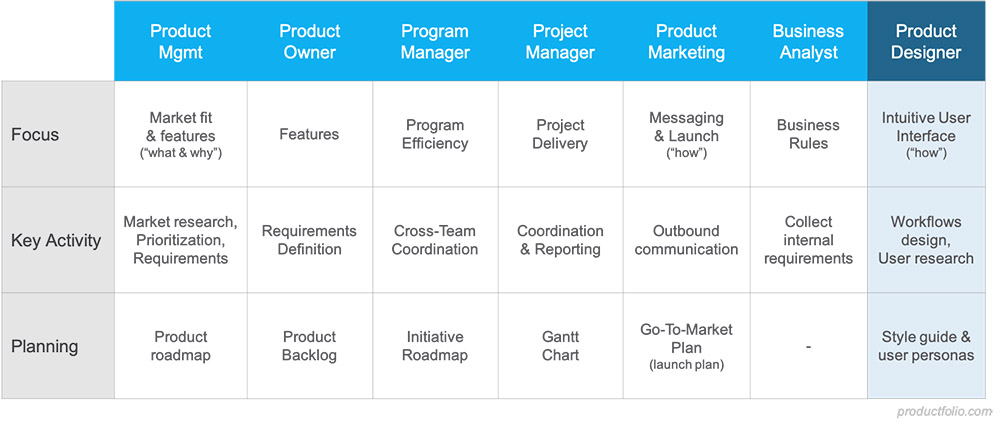Product Manager vs Product Designer
A good product should provide an excellent user experience which requires close collaboration between product management and design. A product designer should work closely with a product manager to get a product/software to a point where it’s both usable (users are capable of knowing how to use it).
Product managers and product designers both play an important role in the development of a product. And while the two roles have frequent overlaps in terms of responsibilities, there are differences and the key to understand them is to discuss the role of a product manager and product designer.

Role of a Product Designer
The journey of developing a product begins with user research. Either working alone or collaborating with UX researchers, product designers seek to find out the key pain points that need to be addressed, what motivates potential users and learn how to manage platform interaction. Being a largely flexible and dynamic role, product designers are involved in UI, UX, coding as well as project management tasks. Product designers assemble teams to come up with multiple test plans, produce wireframes and supervise A/B testing procedures. A product designer works closely with developers during the initial launch process and closely collaborates with marketing teams to ensure proper synergy between a brand and a product.
Product designers also analyze data, formulate user portraits and, determine whether a product under design shall be useful in the market. They also adopt the use of various research methods including study psychology to better understand user profiles and cultivate empathy. Working closely with product managers, they create product sketches, user portraits and user journey maps. In a nutshell, a product designer’s role is to ensure best experiences that meet both customer and business goals despite the technical constraints.
Solution creation which is what product designer do, consists of major processes such as journey mapping, interaction design, usability testing, personas, prototyping and, final visual design. Product designers should also be well versed with the principles of content creation related to digital products. PDs aren’t expected to write code, but they should have a deep understanding of the technologies and frameworks utilized by developers in order to work effectively.
Role of a Product Manager
Unlike product designers who focus on the technical aspect, product managers are business advocates who’re required come with a product development strategy based on user problem data. Product managers are directly tasked with market and competitor analysis, roadmap creation, assignment of tasks, teamwork setup as well as acceptance criteria description. PMs decide on the order of prioritizing customer problems and assign tasks to developers while product designers work closely with developers to solve these problems.
Since they’re responsible for the business value of their team, PMs are expected to guide their teams to achieve maximum value as well as provide leadership to various teams involved in the project delivery. Primarily, PMs handle roadmap prioritization, define goals and strategy, explain project goals and, the success criteria and data analysis. PMs have to ensure product development schedules proceed according to set timelines and project scopes are clearly defined from the beginning to avoid misinterpretation or ambiguity.
Both product managers and product designers have overlapping roles which include engaging in user research to identify their needs, documenting user scenarios and, use cases. In summary, both product managers and product designers are part of the development process at each stage. However, while the product manager directs the team’s focus, the product designer’s job is to ensure the quality and integrity of the product being built. Both roles intersect as their work is built around seeking to understand user problems.